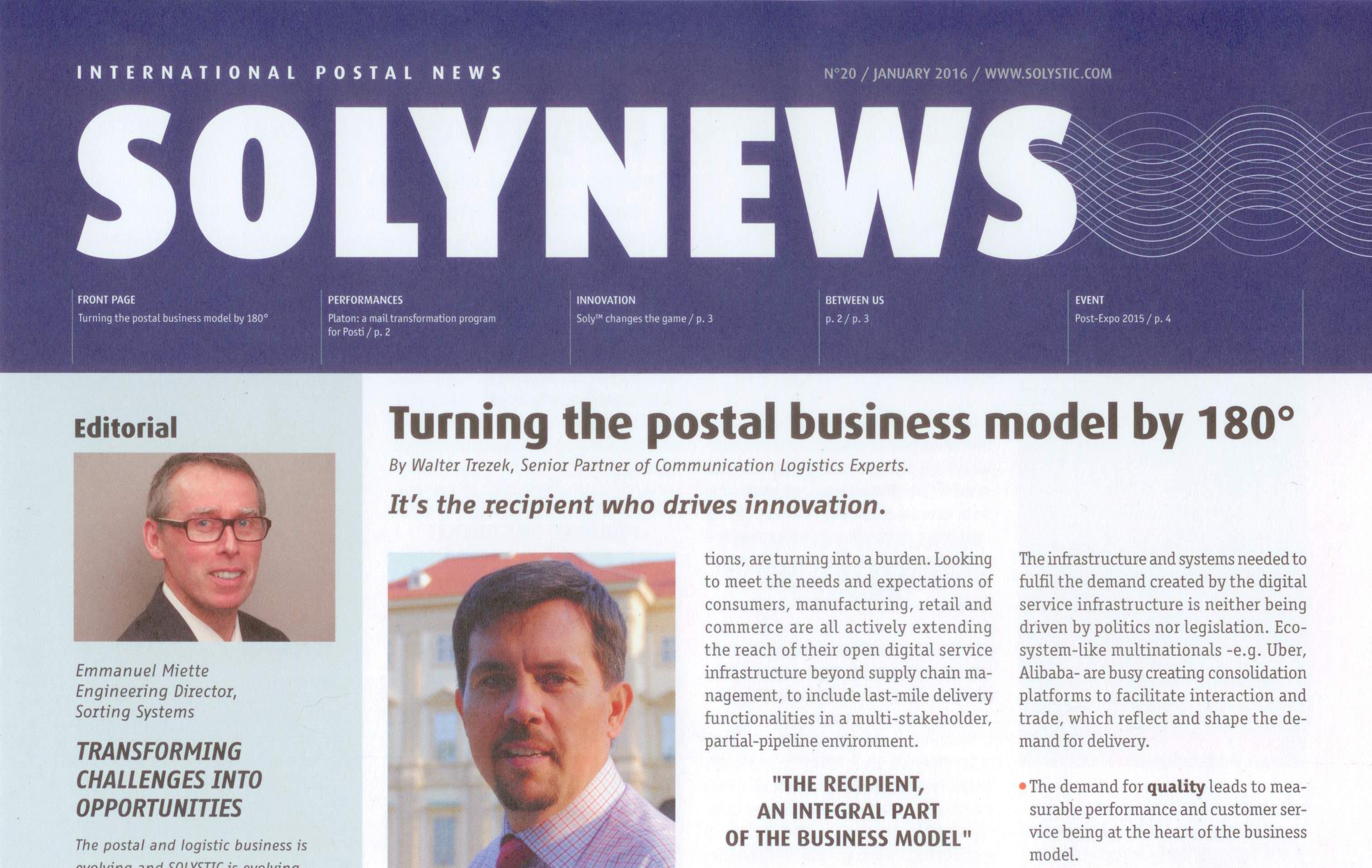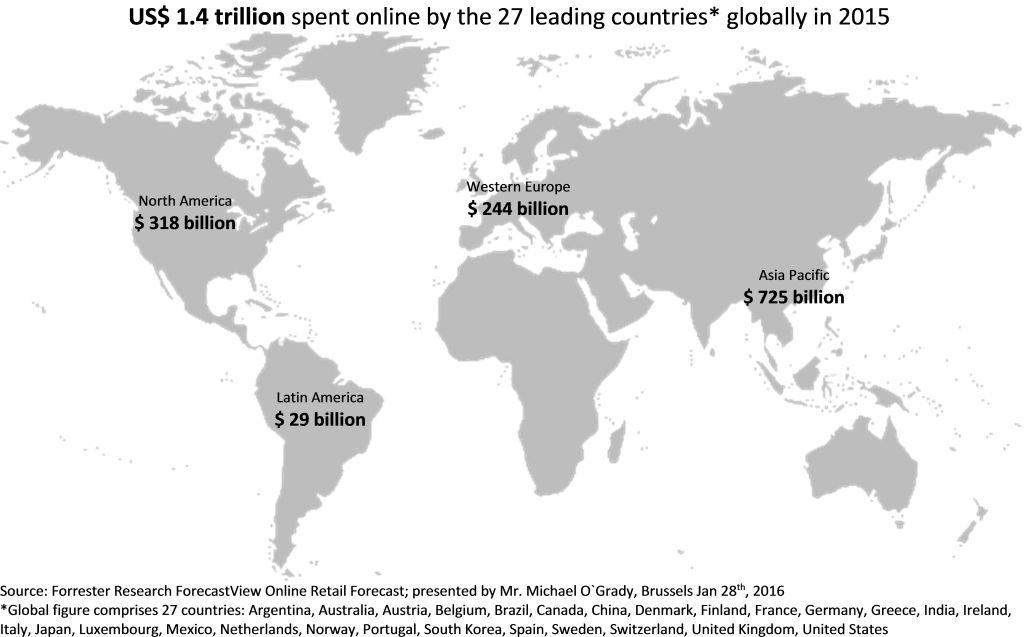- Home ›
- Digital Post Services ›
- Postal Business Model
Turning the postal business model 180°
Modern postal services understand it's the recipient who drives innovation

At A Glance
- Modernising letter and parcel post delivery means viewing the postal business model from the standpoint of the recipient, not the sender.
- Combining this approach with speedier decision-making, a faster response to market demands, an integrated approach to product development and remuneration systems, and connecting wider postal sector players with products and services at all levels, is the recipe for successful, high quality postal services.
- Failure is not an option–enterprises generating demand amongst consumers have already proven that, if necessary, they have the means and resources to facilitate delivery themselves, outside the traditional postal network.
- (This article was published in Solynews, January 2016)
The changes in mail volume, product and service mix that we have experienced over the past decade are heralding the digital service environment in which we will all find ourselves in the near future.
Countries like Denmark, whose governments have actively fostered
direct and integrated means of secured electronic communication to raise the
efficiency of business and citizen-focused interactions, are seeing the end of
analogue transactional or consequential letter mail.
The boundaries between
the means of production, regions, and labour forces are all dissolving. Cross-border
commercial letter post, packet and parcel volumes are growing. South-East Asia
and South America are regions experiencing major growth in ecommerce. North America and Europe, although currently still ahead, will
fall behind.

Fig. 1: Global ecommerce spend in 2015
Proprietory systems are unsustainable
Digitalisation
is breaking down current delivery value chains into their constituent – and
exchangeable – parts. This directly impacts cost and business models.
In the not too distant past, proprietary
systems which were safeguarded by monopolies, secured by regulated tariffs, and
guaranteed daily delivery, were needed to maintain a certain level of
communication and the exchange of goods, both nationwide and globally. However,
these times are gone.
Manufacturing and the trade in consumables
has created a global, digital service infrastructure.
The communication media needed to exchange
information and facilitate trade and its related transportation infrastructure will
be based on commonly established standards based on marginal cost. The
proprietary systems which once safeguarded the postal administrations are
turning into a burden.
In order to meet the needs and expectations of individual recipients/consumer, manufacturing, retail and commerce are all actively extending the reach of their open digital service infrastructure beyond supply chain management, to include last-mile delivery functionalities within a multi-stakeholder, partial-pipeline environment.

Fig. 2: So who will be the largest delivery network, not owning a single delivery van?
Enterprises who place their focus squarely
on the recipient strive to make the customer an integral part of their business
model, by applying state-of-the-art communications to leverage on their
existing infrastructure, minimising their own costs and boosting
customer-retention (e.g. Amazon Prime).
As the focus shifts to the end consumer/recipient, existing borders start to become blurred – between work and leisure time activities, the customer’s role as a consumer or producer of goods, service or content.
Delivery is an integrational component of digital service infrastructure
In this new digital world, delivery is still the
integrational component of service deployment.
Quality, speed, transparency of service levels and
convenience are the factors which determine the success of any business
transaction.
The infrastructure and systems needed to fulfil the
demand created by the digital service infrastructure is not being driven by
politics and legislation.
Instead it is ecosystem-like multinationals such as Uber and Alibaba who are busy creating consolidation platforms to facilitate interaction and trade which are reflecting and shaping the demand for delivery.
- The demand for quality leads to measurable performance and customer service being at the heart of the business model.
- The demand for speed leads to customer retention via same-day or even immediate delivery options, financed via a flat fee model.
- The demand for transparency leads beyond traceability to proactive messaging and real-time adjustments according to the preferences of the recipient.
- The demand for convenience leads to easy-to-use return solutions, scheduled drop-off and alternative delivery options, pick-up and recycling options.
Recipient-focused first and last mile demand which is consolidated by multinational platforms is eliminating today’s product and service silos.
In tomorrow's postal business model the distinction between “Courier”, “Express” and “Postal” becomes irrelevant.
The seamless x-border solutions in tomorrow's postal business model are based on electronic advanced data (EAD)
And what's even more threatening for traditional
postal operators – and everyone failing to turn their postal business model by 180°
– is that the seamless x-border solutions not offered by
today's delivery providers will be substituted by the platforms themselves who,
thanks to their customer-centric business models and use of electronic advanced
data, can engage with any available delivery infrastructure on an ad hoc basis.
The 26th UPU Congress in
Istanbul 2016 will decide if, by involving a broader range of postal sector
players in the existing global UPU network, it will be possible to secure
lasting development and the future success of efficient, universally
accessible, high quality postal services at marginal cost, in order to facilitate
communication and sustainable delivery between the world’s citizens.
In a global digital market, it is the global citizens, and commerce initiated via a globally accessible, digital service infrastructure, which will determine the shape of tomorrow's open and integrated postal business model.
- Home ›
- Digital Post Services ›
- Postal Business Model
Does this article cover a topic relevant to your business? Access the CLS Business Lounge for the market intelligence you need to stay ahead of the crowd. Find out more


